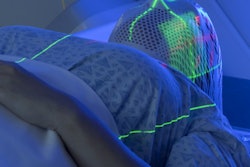
Prioritizing care for some people with breast cancer may be necessary if hospital systems experience a surge of patients with COVID-19. Leading breast cancer experts offered their pandemic guidance in a report published on April 7 by the Society of Breast Imaging.
The report detailed how breast imaging professionals can prioritize, treat, and triage patients as health systems have modified typical care protocols. It features the contributions of more than a dozen experts from leading radiology and cancer associations, including the American College of Radiology.
"The COVID-19 pandemic presents clinicians a unique set of challenges in managing breast cancer (BC) patients," wrote the authors, led by Dr. Jill Dietz from the National Accreditation Program for Breast Centers. "As hospital resources and staff become more limited during the COVID-19 pandemic, it becomes critically important to define which BC patients require more urgent care and which patients can wait for treatment until the pandemic is over."
Priority A: Can't wait
The authors defined patients with the most urgent need for treatment as Priority A. These are patients who need treatment even if resources are scarce, Dietz and colleagues noted.
"Priority A patients have a condition that is immediately life-threatening, clinically unstable, or completely intolerable and for whom even a short delay would significantly alter the patient's prognosis," they wrote.
Most breast imaging cases should be considered a lower priority, but some urgent situations may need to be addressed as Priority A. These include a severe breast abscess formation or evaluation of a serious postoperative complication.
For radiation therapy, Priority A patients include those with symptomatic disease. The authors recommended short, palliative radiation therapy when possible, but it depends on the case and available resources.
"Patients clinically progressing on neoadjuvant therapy should be considered for a longer definitive preoperative hypofractionated regimen to reduce risk of continued progression if surgically unresectable or resource constraints prohibit timely surgery," they wrote.
Priority B: Short delay
Priority B patients are those whose condition is not immediately life-threatening, as well as people who cannot wait indefinitely for treatment. This category would include the majority of patients with breast cancer, the authors noted.
"If conditions in a geographic location only allow for Priority A patients to receive treatment, then treatment for Priority B patients can be delayed for a defined period of time during the pandemic," they wrote. "A short delay (e.g., 6-12 weeks) would not impact overall outcome for these patients."
Breast imaging for Priority B patients would include diagnostic imaging for an abnormal mammogram or suspicious symptoms. It would also include biopsies for BI-RADS 4 or 5 lesions, breast MRI for evaluating disease extent, and assessment before chemotherapy.
"Biopsies for lower suspicious lesions (BI-RADS 4A) may be postponed or biopsied," the authors wrote.
Many patients referred to radiation therapy for breast cancer would also be considered Priority B, although there isn't consistent evidence on the effects of a delay in radiation treatment.
For instance, patients with locally advanced or inflammatory cases may have worse outcomes for delays of greater than eight weeks, the authors noted. However, patients with early-stage, estrogen receptor-positive cases may be able to wait up to 20 weeks without a significant effect.
Priority C: Postpandemic
Priority C patients would include those with a lower risk of adverse effects from the delay of treatment and services. These patients should have their treatment delayed until the COVID-19 pandemic ends, the authors noted.
For breast imaging, Priority C patients include all those undergoing routine screening evaluations. It also includes short-term, follow-up diagnostic mammograms and ultrasound for BI-RADS 3 cases.
"BRCA mutation carriers under the age of 40 may be considered for screening if delays of more than 6 months are expected," the authors wrote.
Patients for whom radiation therapy doesn't affect survival outcomes would be considered Priority C, the authors noted. This includes patients with ductal carcinoma in situ (DCIS), with the exception of estrogen receptor-DCIS with positive margins if reexcision is not possible.
"A mechanism should be in place to reevaluate patients for whom standard [radiation therapy] is deferred so that recurrences/disease progression can be detected and managed appropriately," the authors wrote.
Clinical judgment still needed
When determining which priority of patients to see, the authors recommended considering local conditions and patient/staff risk factors. These include the number of beds available on hospital floors and intensive care units, the prevalence of community transmission, and the availability of supplies, such as personal protective equipment.
Dietz and colleagues cautioned that their advice is designed for patients with breast cancer who do not have symptoms of COVID-19. They also noted the guidance is based on limited experiences, as time constraints prohibited the publication of a formal consensus statement. Finally, the publication isn't meant to replace clinical judgment or institutional policies.
"The demands that the COVID-19 pandemic will place on healthcare institutions remain unpredictable and will have geographical variability," the authors wrote. "Therefore, the risks of disease progression and compromised BC-specific outcomes need to be weighed against viral exposure to patients and staff, taking into consideration each individual's comorbidities and age to predict risk of mortality from COVID-19."



















